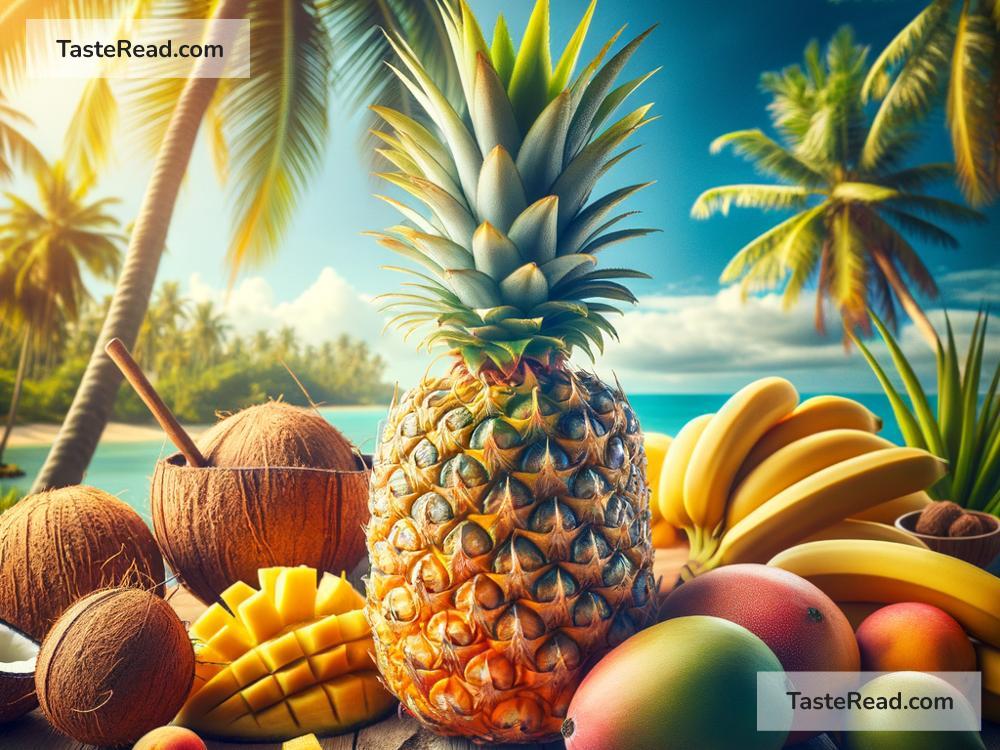How Pineapples Became Symbols of Tropical Happiness
When you think of pineapples, what comes to mind? Many of us picture sunny beaches, colorful cocktails, and vacation vibes. Pineapples have become symbols of tropical happiness, but have you ever wondered why? This cheerful fruit wasn’t always connected to warm destinations and good times. Its journey to becoming an icon of tropical joy is a fascinating story that spans centuries, continents, and cultures.
The Origins of Pineapples
Pineapples originally grew in South America, specifically in areas like Brazil and Paraguay. The people of these regions cultivated the fruit for its sweet taste and usefulness. Pineapples weren’t just food; they were also used in traditional medicine and rituals. The fruit’s crown-like top and unique design made it a special plant to the Indigenous peoples.
When European explorers came to the Americas in the late 15th and early 16th centuries, they were amazed by this exotic fruit. Christopher Columbus is said to have encountered pineapples in the Caribbean on his voyage in 1493 and called them the “fruit of kings” due to their striking appearance and delicious flavor. From then on, the pineapple’s journey to fame began.
Pineapples as a Luxury Item
In the 16th and 17th centuries, pineapples were introduced to Europe. However, growing and transporting them was very difficult. Pineapples needed warm climates to thrive, and refrigeration hadn’t been invented yet. That made them extremely rare. For a long time, only royalty and wealthy elites could afford them. Because of their scarcity and price, pineapples were considered symbols of wealth and luxury. Displaying a pineapple at a feast or banquet showed guests that you were rich, powerful, and sophisticated.
In fact, some hosts would rent pineapples simply as decorations for parties. People would admire the fruit without actually eating it! This practice emphasized the pineapple’s status as a symbol of opulence and exclusivity.
From Luxury to Tropical Delight
As global trade expanded in the 18th and 19th centuries, pineapples became more accessible. Plantations in tropical areas such as Hawaii and the Caribbean started growing large quantities of the fruit. Technological advancements also made transportation faster and more reliable, allowing pineapples to reach countries worldwide in better condition.
Around this time, the pineapple’s association with tropical locations started to grow. The lush greenery and warm climates of pineapple-growing regions helped establish the fruit as a marker of tropical paradise. Advertisements and postcards often featured pineapples alongside palm trees, blue oceans, and sandy beaches, solidifying their connection to holiday destinations.
Pineapples in Hospitality and Design
Interestingly, the pineapple also became a symbol of hospitality. In colonial America, you might see a pineapple carved into the entrance of a home, atop furniture, or baked into desserts. It represented friendliness, generosity, and a warm welcome for visitors. This idea stemmed from its rarity and the sense of “sharing something special” with guests. Even today, you might notice pineapple designs in hotels or vacation homes, serving as cheerful reminders of hospitality and relaxation.
During the 20th century, pineapples took on a new role in pop culture and design. Tropical travel became popular, and travel agencies used images of pineapples to promote trips to Hawaii, the Caribbean, and other exotic locations. Pineapple-themed drinks like piña coladas and colorful decorations became staples at beach parties and luaus. By now, the pineapple was more than just a fruit—it was an icon of fun in the sun.
A Symbol of Happiness and Positivity
What makes the pineapple such a perfect symbol of happiness? Its vibrant yellow color, juicy sweetness, and playful shape all evoke positive emotions. It’s visually appealing and instantly recognizable. Whether you see a pineapple in a drink, on a shirt, or as a souvenir, it sparks a sense of joy and relaxation.
The idea of happiness is also tied to the tropical locations where pineapples grow. Many people dream of visiting these places to escape their daily routines and enjoy sunshine, beaches, and carefree moments. Pineapples naturally became symbols of that dream.
Pineapples Today
Today, pineapples are everywhere. They’re not just fruits; they’re part of fashion, home decor, and art. You can find them on everything from swimsuits to phone cases. Social media is filled with pictures of pineapple-themed parties, drinks, and crafts. Companies even use the fruit as a logo or a design element because of its cheerful and positive energy.
The pineapple’s journey shows how a humble tropical fruit can become a worldwide icon. It went from being a rare luxury to a symbol of happiness, hospitality, and adventure. Its connection to tropical destinations and good times has made it a favorite for people who want to add a little sunshine to their lives.
So, the next time you see a pineapple, whether it’s on your pizza, in your drink, or decorating your living room, remember its unique history. This sweet, spiky fruit has traveled a long way to bring smiles to faces around the world. Pineapples truly are symbols of tropical happiness—bright, bold, and full of joy.


